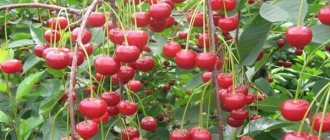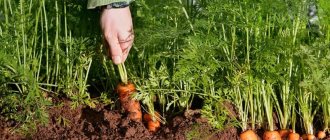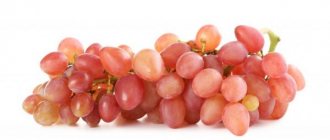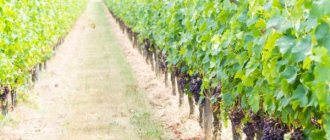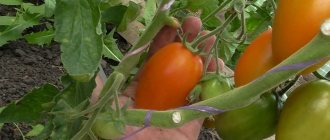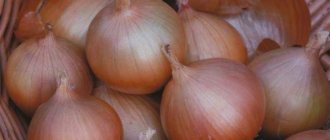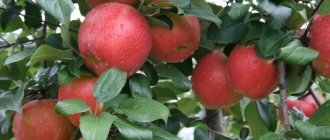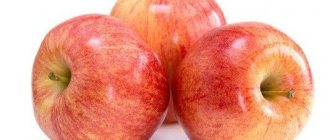Many gardeners grow plums on their plots. These fruits are loved for their versatility in use; they can be used to make preparations for the winter, and you can get plenty of vitamins from fresh plums in the warm season. Most summer residents prefer blue varieties, because they are endowed with a number of advantages: good winter hardiness, excellent taste of ripe fruits, which is important, self-fertility, that is, there is no need to plant pollinating varieties nearby. Today we invite you to learn about the “egg blue” plum. Description of the variety, photos and reviews about it are collected in this publication. In addition, you can learn about the rules for planting and caring for a tree, and what pests it is afraid of.
History of selection
The “egg blue” plum, a description of which will be given in the subsequent contents of the article, was born quite a long time ago; it was bred in 1986. Agronomists of the All-Union Selection and Technical Institute of Horticulture for breeding chose the old, much-loved variety of domestic origin “early ripening”, and the Western European variety “Renklod Ullensa” became a pair for it. The hybrid turned out to be more than successful and is still popular only among amateur gardeners, but not among fishermen. Why? We will tell you in further content.
Recommended for cultivation in the Central regions of Russia. The variety tolerates harsh winters well, so it can be found in Moldova, the Baltic states, Belarus and Ukraine.
Bluefree
American variety. The main advantages are regular fruiting in large quantities and high resistance to specific diseases. The tree grows of medium height, but the crown needs to be molded annually, otherwise there is a risk of too much thickening, and this will have a bad effect on both the quantity of fruits and their quality.
Related article:
Caring for a plum tree in the spring at the dacha in an open area, feeding and pruning
The Bluefry plum is large-fruited; the first harvest test is possible already in the fourth year after planting. Perfect for making compotes, preserves, drying and jams.
Plum tree “egg blue”: description, photo
The variety differs in its size. An adult plum tree can grow up to six meters; its crown is dense, moderately spreading, and has an oval shape. The shoots are dark brown in color, bare, with loosely pressed buds located on the side of them.
The leaves have a dark green color. Their shape is oval, elongated. The surface is smooth, shimmering with gloss, the petioles are small, the teeth are distinct.
The “egg blue” plum blooms beautiful flowers in mid-May, which are located only on annual shoots. The flowers are white, large, have oval-shaped petals, collected in small brushes. If frosts are expected during plum blossoms, then you don’t have to worry. The flowers and buds of the variety are well adapted to temperatures down to -4 degrees. The harvest can be harvested from mid-August, with peak ripening occurring in the last days of summer.
With proper care, an “egg blue” plum tree will live up to thirty years, and will bear fruit consistently, starting from the fifth year of growth.
Rival
The best variety for preparing prunes and dried fruits. It is dried while retaining its taste, while the skin remains soft. The tree grows short, fruiting begins in the fourth year, less often in the fifth.
The taste of this blue plum is sweet and sour. The stone is very easily separated from the pulp, as in all varieties bred for drying.
Fruits and their taste
The variety got its name because of the shape of the berries. They are round, reminiscent of chicken eggs, dense and smooth to the touch. The skin is strong and may seem dense, but in reality it is soft and almost imperceptible when eaten. The color of the fruit is blue, there is a small amount of white coating on the surface of the peel, and it seems that the berries are covered with frost.
The pulp has a beautiful yellow color, it is very juicy, sweet, and contains little acid. Inside there is a small oval-shaped bone; it is quite easily separated from the fruit. If the berry is fully ripe, the seed peels off on its own.
The average weight of one plum is about thirty-five grams. The berries are even, all the same size. The aroma is not strong, but noticeable.
Hermann
An early variety with large, even fruits. Plums have a dark blue color, but at the moment of full ripeness the skin may become covered with a white coating. It should not be confused with fungal diseases; this is a completely normal picture. Those who sell this variety often try to wipe the fruits to make the surface shiny. It really looks very beautiful, but in this case the shelf life is reduced.
Related article:
Fertilize the plum correctly
The tree has a fairly even, rounded crown, which is easy to shape even for a novice gardener. The main advantage of Herman is its dense and juicy pulp. It is ideal for both juices and sauces or jams.
Productivity
The “egg blue” plum, the description of the variety given above, is not highly productive. As we have already written, an adult plant grows up to six meters, and only twelve kilograms of fruit can be harvested from it annually. The first harvest appears five to six years after planting. The advantage of the variety is that it is self-fertile; it does not require pollinators.
The “egg blue” plum tolerates winter quite easily. The kidneys will not be damaged even when the temperature drops to -35 degrees. The variety does not tolerate heat very well. During the dry season and when the sun is consistently “hot”, the tree requires additional moisture. It will need to be watered and the foliage moistened by spraying with a hose or a special system.
The variety is grown by gardeners who use the fruits for personal consumption. Industrial agricultural companies do not produce this variety because it is not productive.
Plum Honey: description of the variety
Honey is also called white or yellow. The fruits grow large, yellow with a white waxy coating. Weighing up to 50 g. Their shape is regular, round. The peel is dense. The fleshy part is the same golden, juicy and sweet without streaks. Honey aroma. The stone is small and difficult to separate.
Plum Honey
This is a dessert variety; plums tolerate transportation and storage in the refrigerator well.
The fruits ripen in late July and early August. In good conditions the yield is high. During harvesting, you should not shake it off, only collect it by hand along with the stalk.
The trees grow tall up to 6 m, the crown is round with sparse branches.
Eaten fresh and used for processing.
Advantages and disadvantages
Like any crop, the “egg blue” plum has its good qualities and not so good ones. What are the advantages?
- Self-fertility.
- High winter hardiness.
- Good transportability.
- Sweet, bright taste of the fruit.
Among the disadvantages of the variety, we highlight:
- low yield;
- tree height.
As you can see, it is quite possible to grow plums for yourself. Jams, compotes, and jellies made from fruits are incredibly tasty and beautiful. Plums contain a lot of vitamins, and fresh fruits are consumed with a bang. The tree will decorate the site; it is especially beautiful and fragrant during the flowering period.
Flowering and pollination
The early fruitfulness of “Egg Blue” is average - trees begin to flower and bear fruit at the age of 5. It blooms late - by the second ten days of May, and the fruits ripen in the mid-late period, approximately in the second or third ten days of August. The variety is self-fertile and does not require planting pollinators in the neighborhood. Yields are average, up to 11 kg per tree, but over the past 16 years the variety has shown periodic yields - 6 of these years were unsuccessful. Not intended for intensive gardening.
Landing area
The “egg blue” plum variety loves well-lit places; it is afraid of winds and excessive moisture. It is necessary to choose a place for planting where groundwater passes at least one and a half meters underground. It is recommended to plant on the south side of the house, so that the wall protects from the wind and the place is illuminated by the sun for as long as possible.
The ideal soil quality is loam with a high calcium content and low acidity. If there is acidification, then neutralization is necessary.
Zarechnaya plum early
Another early ripening species. The fruits ripen evenly at the end of July. Plums have the following characteristics:
- large size, weighing up to 50-60 g, round in shape;
- shade – dark, lilac with a bluish tint;
- the peel is thick, easily removed from the fleshy part of the fruit;
- the pulp is golden-green, juicy, sugary with sourness, delicate and dense consistency without veins.
The trees grow compact and low. The crown turns out to be medium thickened, small, spherical or oval-shaped. The first harvest can be harvested after 3-4 years of growth. Productivity is high, especially if the crop grows in favorable conditions. Zarechny early is resistant to low temperatures, diseases and pests . Tolerates drought well. The fruits are evenly distributed, do not thicken it, and therefore do not become smaller over time. They keep up at the same time.
Zarechnaya early plums are of a table-technical nature. They are used to make jam, jams and compotes. They are stored for a long time and tolerate transportation well.
Site preparation
As popular wisdom says, prepare your sleigh in the summer! Let’s change things up a little and say: prepare the area for planting in the fall. At the selected location, you need to dig a hole with an average depth of 60 centimeters, the diameter should be from 70 to 80 centimeters. The excavated soil must be well loosened, the lumps are crushed, and liming is carried out. At the bottom of the finished pit you need to pour half a kilo of wood ash. After this, the prepared site must be buried back, but the soil removed during excavation must be enriched. To do this, mix it with rotted manure or compost, two buckets will be enough, add one hundred grams of potassium superphosphate and half a kilo of superphosphate.
Landing
When choosing a seedling, pay attention to its condition. There should be no traces of diseases or pests; there should be a vaccination mark on the stem. The roots of the seedling must be strong, free of rot and dried particles.
Before planting, you need to immerse the roots in water for six hours, then treat them with a growth stimulator so that the young tree takes root faster and forms a strong root system.
Plum trees need to be planted before the buds open, that is, in early spring, when not all the snow has yet melted. In the prepared area for planting, you need to dig a hole, first place a tall, strong peg in it, and then the seedling, carefully immersing it in the ground and sprinkling it. The plant should be positioned so that its root neck is four centimeters from the ground. Only in this way will the tree begin to develop well.
After the main work is done, do the following: tie the seedling to the installed peg, dig a trench around them for more convenient watering so that the water does not spread to the sides. The soil around the planting needs to be mulched with peat or sawdust to a depth of two centimeters. Water the seedling generously.
Features of planting and growing plum Nezhenka
Agricultural technology for cultivating Chinese plums is generally the same as for growing domestic plums, but still has some peculiarities. If they are not taken into account, the result may be disappointing.
The nuances of proper landing
Small Nizhenka trees are placed according to a 2.5x3.5 m pattern. When planting, consider the following:
- Trees of the described variety are planted in the fall, since the root system of the Chinese plum is adapted to the cold. Trees usually take root well during the winter and begin to actively develop in the spring. However, during the first wintering it is better to completely cover the above-ground part of the seedling with breathable material.
- “Chinese women” do not accept soils with an acidity level even slightly higher than neutral; the best option would be slightly alkaline soil.
- To prevent the root collar from rotting out, it is better to place the trees on a mound 0.5–0.6 m high: such planting will prevent the accumulation of melted snow in the area of the trunk.
- The root collar must be exactly at soil level; it cannot be buried.
Otherwise, they adhere to the general rules for planting plums.
Subtleties of tree care
Caring for the crown of Nezhenka will not be particularly difficult, since it is of medium density and small in size. Pruning is carried out as necessary, cutting out dry, diseased, damaged branches and branches growing inside the crown. And also do not forget to remove root growth in a timely manner. The shoots of Nezhenka are not very thick; they can break when setting a large number of fruits. It is worth preparing strong supports for them in advance.
The rather thin branches of Nezhenka may not withstand the weight of a bountiful harvest, so you should take care of strong and stable supports in advance
Since Chinese plums are moisture-loving, the trees are watered regularly and in sufficient quantities, drying out the soil is unacceptable for them. The root system of plants is superficial, most of it lies at a depth of 40 cm: the soil should be moistened to this level. It is necessary to ensure that the soil is always moist and loose, but the root collar should not be damp. Water the plants in specially dug grooves in the tree trunk circle. If the soil is covered with mulching material, you need to ensure that it does not come into contact with the trunk.
When covering the tree trunk circle with mulch material, you need to ensure that it does not cover the root collar
Trees are fed in the same way as home plums. The main thing is that the fertilizer does not contain chlorine - the Chinese plum does not tolerate it.
Protection of plants from adverse factors
The relative resistance of the variety to clasterosporiosis reduces the risk of being affected by this disease, but does not exclude the possibility of the appearance of other diseases. Plants can also be attacked by harmful insects, resistance to which is not mentioned in the sources. To avoid problems associated with diseases and pests, sanitary and preventive work is carried out in a timely manner, and trees are also sprayed with fungicides and insecticides in the autumn and early spring.
How to survive winter
In order to help trees survive the winter without damage, the following measures are taken:
- As soon as the temperature begins to drop below 0°C at night, you need to wrap the trunk with burlap or breathable covering material.
- When snow falls in large quantities, the branches may not withstand its weight and break, so the shoots should be shaken off from the snow.
- Damping off of the root collar is prevented as follows: when the first snow falls on the ground, it is raked away from the trunk to allow the soil under the root collar to freeze well;
- during each thaw, the trunk is cleared of snow;
- In the spring, grooves are dug to drain water from the trunk that forms after the snow melts.
Aftercare
In the year of planting, weeding and loosening are necessary; the main concerns will begin from the next season. What will need to be done?
At the beginning and end of June, nitrogen fertilizing is necessary for the tree. For the third and fourth years, the following fertilization plan is needed:
- feeding in May - three large spoons of urea per bucket of water;
- in June - the same amount of nitrophoska per bucket of water;
- in August - potassium sulfate and superphosphate in the same volumes.
In the fifth year, fertilizing is done with the same fertilizers and in the same order, only the scheme will be as follows: the first - before flowering, the second - when the plums ripen, the third - at the end of the season after harvesting the entire harvest.
It is also necessary to consistently loosen the soil around the tree, eliminate weeds that take away nutrients, watering, and mulching to maintain the required amount of moisture.
The very first pruning is done immediately after planting the plant. It is necessary to remove all unnecessary branches, leaving about ten of the strongest and strongest ones. This will be the base of the crown of your future tree.
When pruning, do not act chaotically, the branches must not grow in disarray, avoid thickening the crown, this will lead to insufficient light for the fruits.
In the spring, all diseased, frozen and dried shoots are eliminated. Good growths should be trimmed.
Rodents love plum bark, so it is necessary to protect it. To prevent the teeth of rabbits and other pests from reaching the trunk, wrap it with a polymer mesh. Do not forget about preventive spraying against diseases and harmful insects.
Diseases and pests
The Blue Plum variety is distinguished by its susceptibility to a disease such as clyasterospirosis . This disease mainly affects the leaves of the plant; it manifests itself as red spots, in place of which, after some time, holes appear. This is a type of fungal disease. It can spread not only to leaves, but also to young green shoots. The disease spreads rapidly. It instantly passes from one plant to another.
Clusterospirosis of plum
Fungicides are used to combat the disease . In this case, it is necessary to periodically change the means.
Prevention against clyasterospirosis is carried out three times a year: during the formation of buds, during the period of the beginning of flowering, after flowering. The treatment is done using Bordeaux mixture; copper sulfate is also suitable.
Codling moth is another problem that can arise in a plant . It can cause significant damage and reduce plum yields. Codling moths gnaw at the ovaries, and they also feed on ripe fruits. Both caterpillars and adult insects pose a danger.
Plum moth
To protect the tree from harm, you will have to scrape off the old bark from the surface of the trunk and branches . If there are a lot of insects, treatment with special means will be required.
Plum is eaten by aphids
The enemy of the plant is aphids . These insects are active in the spring. At this time, they begin to settle in huge groups on the inside of the leaf. Treatment against these harmful insects is carried out in the evening or in the morning, in calm weather. The procedure is done one and a half months before the harvest ripens. For these purposes, you can use the chemical "Intra-Vir". This drug is very effective in controlling aphids.
The plant should not be treated with chemicals during flowering or during fruit set.
Often the appearance of aphids on a plum tree indicates that the plant is not receiving enough mineral fertilizers, namely phosphorus. Therefore, if there is an abundance of aphids, the tree can be treated with Ammophos . This nitrogen-phosphorus fertilizer can be applied directly to aphids. You will need to pour ash under the roots of the tree and dig it up. This procedure will help cope with aphids.
In addition, plums are slightly susceptible to fruit rot .
Fruit rot on plum
Plum “egg blue”: reviews
The variety has been grown on their plots by residents of the Central Belt for many years. They write that this is an ideal plum; it grows and bears fruit even where other fruit trees simply freeze in winter. They praise them for their unpretentiousness and tasty fruits; they write that the harvest is enough to eat enough fresh, and other varieties that are more productive can be grown for harvesting.
The “egg blue” plum, the photo of which you see in the article, is liked by gardeners; they recommend it to those who value the taste of the fruit, and not their quantity. They write that it is rare to find such an amazingly tasty variety.
Giant
The main feature of this variety is its huge fruits, which can be compared in size to tomatoes. Under good conditions, their weight reaches 100 g, but the bone inside is not large, that is, most of the weight is the pulp.
The peel is rich blue and not hard, so Gigant makes excellent purees or jams. At the same time, the plum tolerates transportation well. It becomes ripe in the second half of September, so it is recommended for planting in the southern regions, since in a more northern climate early cold weather can prevent it from ripening. At the same time, the variety is resistant to extreme winters and is not affected by fungi during rainy periods.
Related article:
What an experienced gardener needs to know about plum propagation
